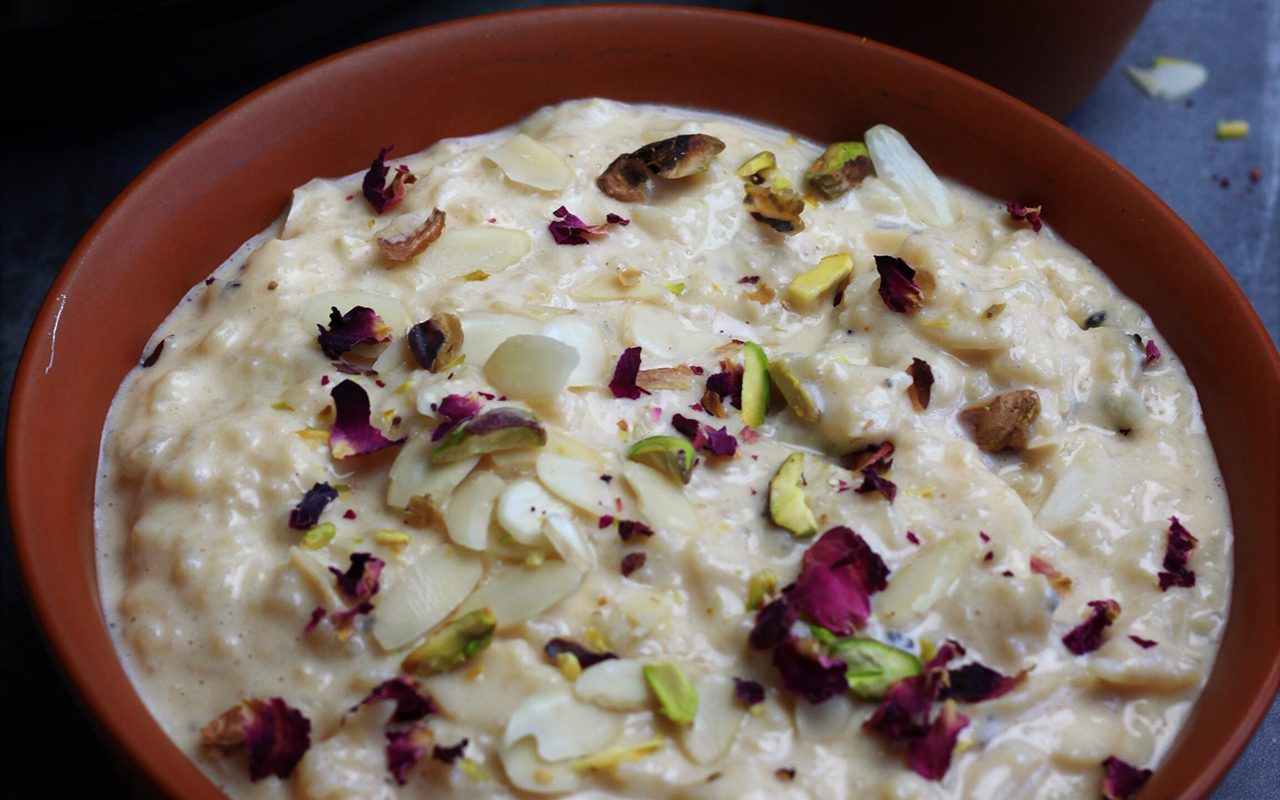![]()
In Hinduism gods are not all powerful. They are not exactly human, and they perform insane feats. There is an Hindu god known as Krishna. He is worshipped as the eighth avatar of Vishnu, the god of preservation, also as the supreme God in his own right. He is the god of protection, compassion, tenderness, and love and is one of the most popular and widely revered among Indian divinities, but he was not very dignified. The stories say that he was extremely mischievous and was always plotting something. As a child he would break into the cow pens and steal butter, his favorite food. They call him “Makhan Chour” or butter thief. But other than butter he would also steal kheer. He would sneak into the houses of those making kheer and steal the kheer.

In many cultures rice pudding would often show up in the culture when rice arrived to the area. Kheer is the Indian equivalent to rice pudding. The first mention of kheer, which historians say was derived from the Sanskrit word kshirika (meaning a dish prepared with milk), is found in the fourteenth century Padmavat of Gugarat, not as a rice pudding but a sweet preparation of jowar and milk. Back then using millets in pudding was quite common. Although that is the first official mention of kheer, it has been proven that kheer was a part of the ancient Indian diet, thanks to its being mentioned in ayurvedic medicines, and the fact that rice arrived in India much before it did in Europe and India’s neighbors, who were introduced to rice courtesy the Arabs and the Spice Route much later, very little is known as to when the first kheer was prepared or its story of origin (A basic history can be found here).
At it’s core Kheer is essentially rice pudding with spices, but do not let that similarity deceive you. Kheer is one of the most unique desserts in India. Opposite to the rest of the sweets I have covered, Kheer is more popular in South India than it is in North India, and like with everything else in India there is a lot of variety. There are a great variety of kheer recipes. You can replace rice with grains, fruits, vegetables, millets, quinoa, vermicelli, etcetera to make this dessert. The most popular form of this dessert is the rice version, a recipe of which can be found here. I personally have not tried many versions of kheer besides the rice version, but I would recommend trying at least that version.
This blog is especially interesting to me because I actually have a friend from India that I met since coming to college! It’s definitely easy sometimes to get caught up in the things that we’re comfortable with instead of exploring things outside of our comfort zones. For me, that is definitely food. My friends would absolutely refer to me as a picky eater (which I won’t deny) because it’s hard for me to try new things. However, this post makes me curious! I’ve definitely opened up more and have tried new things, including many Indian foods thanks to my friend from India’s parents. This blog is so helpful in helping me to discover new things I otherwise would never know about.
I really loved that you gave the backstory to this dish! I don’t know that much about Hinduism but you were able to tie that in to the dish itself really well. That truly gives great insight into the spirit of this food. I appreciate that you went beyond the ingredients of kheer to discuss its history, significance, and differences based on the regional location. It sounds so interesting! I’m very curious about what it tastes like. It seems very versatile. Thanks for sharing this with us! I look forward to hearing about the foods you’re going to talk about next.
I think it is so interesting and engaging how you not only talked about the dish itself but a story including it in the culture. It allowed me to realize how popular the dish is in India because of the figure behind it that people know of. I thank you for including how Kheer is the equivalent in India to rice pudding because that allowed me to put into context what the dish was since I am unfamiliar with it completely. It is definitely so cool that the dish can be made in numerous different forms so thank you for speaking to the diversity of the dish itself!